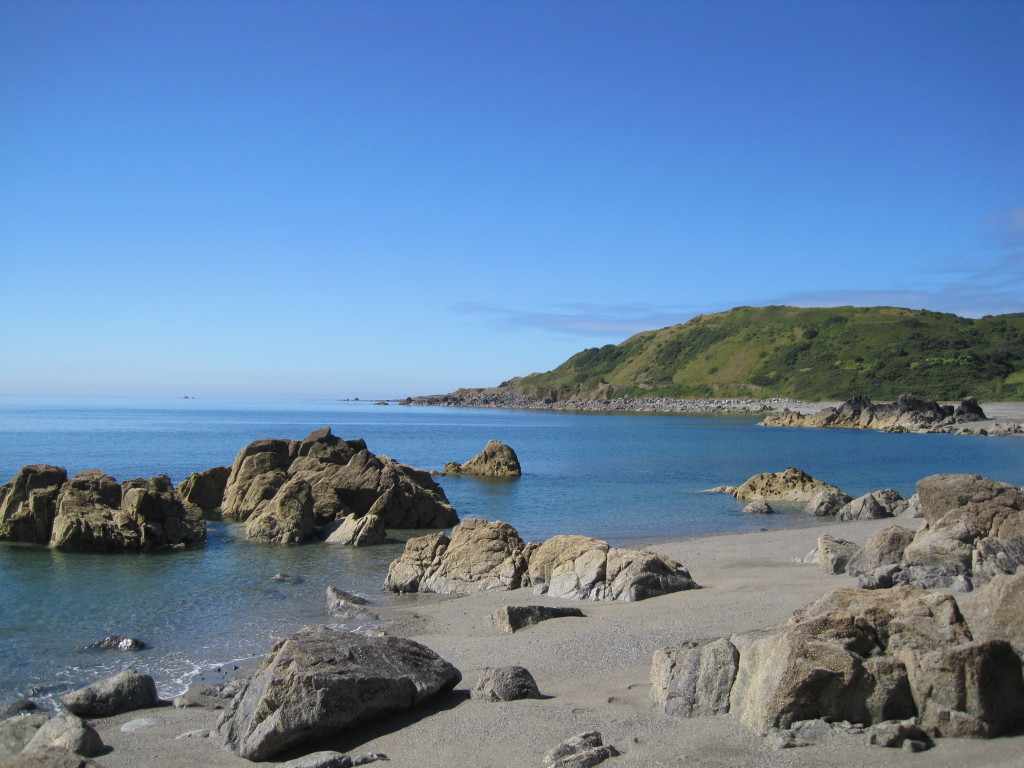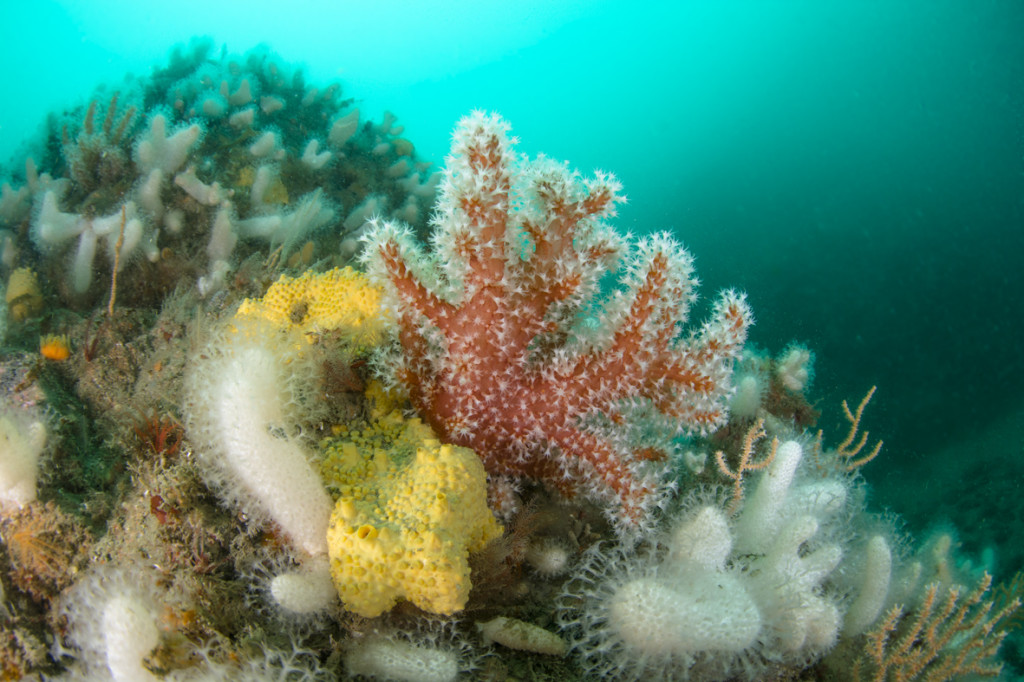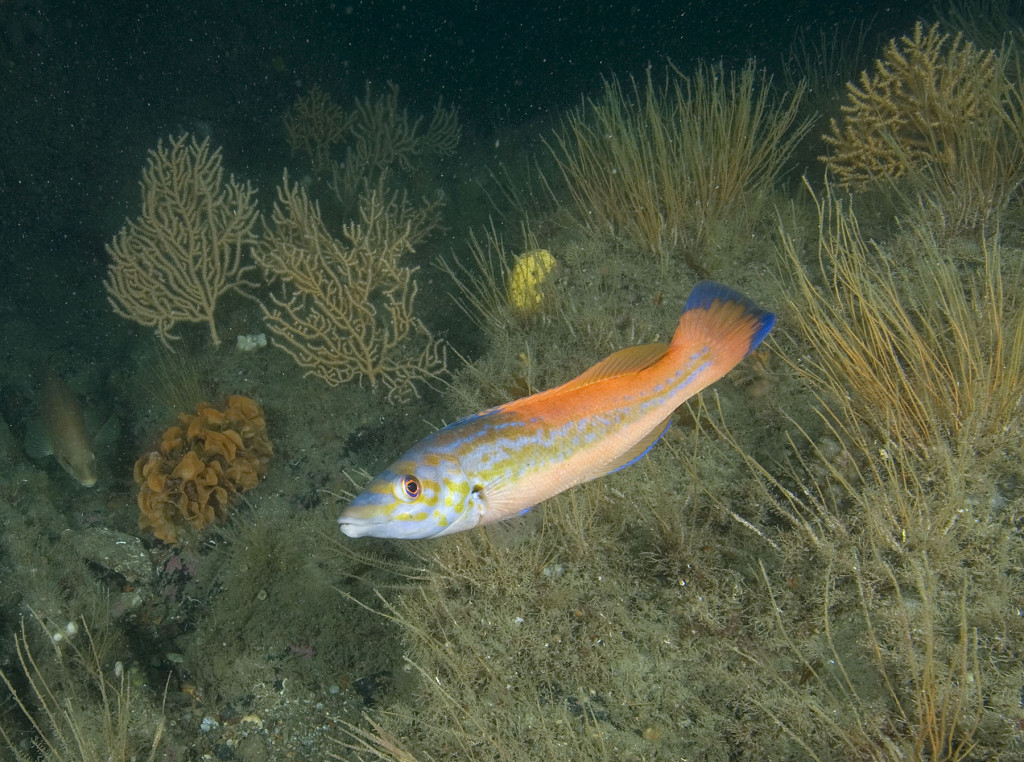News
Marine Conservation Zone in Cornwall under threat from Super Quarry

Once again, industry seems to be flying in the face of conservation and the concerns of local people. Two companies, Shire Oak Energy and Shire Oak Quarries are trying to open a dormant quarry (Dean Quarry) which is situated on the beautiful Lizard Peninsula in Cornwall. The environments in which we live throughout the world are continually being destroyed in the name of short term profit and thoughtless greed. Once again the wishes of a local parish council seem to be being over ruled by County Council. Why are large companies allowed to over rule the wishes of local people and why is the time and money used in setting up protected areas wasted so easily? As we progress into the 21st century I always hope we can learn from past mistakes and protect precious environments that make our own living spaces so special. So often I am proved entirely wrong.
If you would like to help stop this destructive development then get involved and let your voice be heard.
I contacted Jo from Porthkerris Divers who operate in the area to ask her about the project. This is her reply:
The story so far….
Director (and majority share holder) of Shire Oak Energy and Shire Oak Quarries, Mark Shorrock, is also director (and shareholder) of several companies linked to the Quarry (Tidal Lagoon Power, Dean Quarry Mineral Rights, Tidal Lagoon Swansea etc). They propose to excavate 1.5 million tonnes in the first year alone, although figures are forever changing. Previous quarrying at its maximum was no more than 200,000 tonnes a year. The quarry has been dormant since 2008. The stone is to be used to build the proposed tidal lagoon in Swansea and possibly others, should permission be granted to build them, ironically in the name of “green energy” (“energy which is produced in a way that PROTECTS our natural environment”)!!
The company, Shire Oak Quarries has already submitted a land based planning application (security fencing, explosives store, buildings etc.). Although it was turned down by the Local Parish Council, it was approved by Cornwall Council.
The next step is that the company Shire Oak Energy are soon going to submit an application to build a 535m long 50m wide breakwater and jetties within the Manacles Marine Conservation Zone (MCZ) which borders the old quarry, so that they can load 10,000 tonne barges 24/7.
Many people and organisations have huge concerns about this project and particularly the breakwater and jetties within the actual MCZ. The quarry is only a few hundred meters from houses and the local primary school in the village of St Keverne. We have been told by Mark Shorrock – in a public meeting on 30th January in front of a village hall packed with worried locals – that if he didn’t get the permission for his breakwater and jetties that he would drive all the stone out through the village in lorries, past the primary school, houses, popular tourist attractions etc. For the amount of stone that they are wanting to extract a year, that would mean several hundred lorries a week.
The Manacles MCZ, where they want to build the breakwater, is renowned for its fast flowing tidal currents and clear waters, supporting an amazing range of marine life – jewel anemones, sea fans, mearl beds, plumose anemones, spiny lobster, etc. It is a perfect, protected breeding ground for many types of fish. The manacles MCZ is also an important area for marine mammals and the internationally protected basking shark, which are highly sensitive to noise. How will blasting, loading of the 10,000 tonne barges 24 hours a day etc. affect them? What effect will the breakwater have on currents and sediment transport processes? What effects will the day-to-day operations have on redistribution of sediments? The proposal is to bring in several 10,000 ton barges per week, which will have to be moved by tug boats. We would question how the propeller action of the tugs will interact with tidal and wave action to redistribute the sediment around the manacles MCZ.
The Manacles is also an extremely treacherous shipping area (hence the large number of shipwrecks in the area). Navigating the inner manacles with 2 tugs guiding a 10,000 tonne barge laden with rock armour several times a week, is surely an accident waiting to happen.
And talking of Ship wecks, the position of the actual breakwater is right on the site of a famous shipwreck called “The John”, which went down in 1855 with a loss of 194 lives (There is a whole website dedicated to it which you can find here). Not far from the breakwater also lies the famous shipwrecks ‘The Mohegan’, The ‘Andola’ and ‘The Spiridian Vagliano’ and the war ship ‘The Primrose’.
It is essential that the few areas of relatively pristine marine habitat we have left remain properly protected. Many conservation organisations and leading academics are already very concerned about the government’s failure to deliver the full network of MCZs that were recommended by the scientific community. The Manacles MCZ is one of only 27, out of 120 proposed. Luckily there are now calls for more to be designated… but it is important that we are able to also protect the ones already in place; otherwise, what is the point?
The proposed development of a breakwater and general up-scaling of operations at Dean quarry is therefore not only the first real test of what it means to be a MCZ, but will also be under intense scrutiny from conservation groups and the marine science community. The manacles MCZ looks set to serve as an important test case. This is the first major challenge to a MCZ and could set a precedent for the others.
So many people are very concerned about the proposed development and how it could negatively affect lives and livelihoods, health, safety, the environment, the AONB, SW coast path etc etc, but unfortunately a lot of people are not aware of the impacts on life under the sea. Now would be a great time to raise awareness of this particular issue, so that when this next application is made, people will have a better understanding of what is at stake.
The first stages of the plans have been covered by the following publications:
Daily Telegraph:
Daily Mail:
Others:
https://www.google.co.uk/?gws_rd=ssl#q=dean+quarry&tbm=nws
For more information, visit www.cads2015.com, or find the ‘Community Against Dean Superquarry’ on Facebook. For Marine Management Organisation plan documents, downloadfrom: https://marinelicensing.marinemanagement.org.uk/mmo/fox
News
Book Review: Fire on Monroe Bravo by Fred Lockwood

Fire on Monroe Bravo is the latest book in the Jack Collier series by Fred Lockwood. Our story begins with our lead characters, Jack and Sandro, owners of Marine Salvage & Investigation Company, arriving on the Monroe Bravo Oil & Gas Platform in the North Sea. Having secured a contract for their vessel the MV Stavanger to act as support ship to the platform for TransGlobal Oil, our protagonists are on a celebratory visit.
However almost as soon as they arrive a series of explosions rock the platform, causing huge damage, loss of life and the very real danger of a massive human, ecological and financial disaster.

As the danger mounts for both our heroes and the surviving workers, Jack and Sandro will have to escape the inferno, all while trying to save the platform and the men still trapped unable to help themselves.
The disaster sets the scene for the unfolding story lines following the fate of the platform and our main characters, the police investigation into a suspected terrorist act and the actions of TransGlobal Oil as they attempt to navigate the pubic outcry and financial repercussions.
In his eighth book, Fire on Monroe Bravo, Fred Lockwood delivers an explosive thriller, with plenty of above and in-water drama, and our heroes fighting for survival, what more can you ask for?
We thoroughly recommend this read and look forward to the next in the series. For more information about his book series, you can check out the reviews of his previous books here on Scubaverse.
- Title: Fire On Monroe Bravo
- Author: Fred Lockwood
- ISBN: 979-8325324536
Available in a paperback version and for Kindle from Amazon and book stores.
Blogs
Alonissos: The complete diving destination (Part 1)

In June we were incredibly fortunate to be invited to dive in Alonissos, a small Greek Island in the Sporades island chain located in the North Aegean Sea. While I have long been a big fan of the Greek Islands as a great holiday destination, I had not had the opportunity to do any diving on previous visits and Mike and I were extremely excited to see what Alonissos had to offer both above and below the surface!

The Sporades are easily accessible via the airport in Skiathos (the first island in the chain), which is served by Jet2 flights from all major UK airports from May through October. Numerous ferries and charter boats make island hopping from Skiathos Town a breeze. After an hour boat ride, the picturesque port of Patitiri was a wonderful introduction to Alonissos, where we were met by our gracious hosts Kostas of Albedo Travel and Dias of Alonissos Triton Dive Center. Mike and I were delighted to be staying at the Paradise Hotel, aptly named for its stunning views over the sea and great location for walking to the waterfront.

Alonissos is beautifully situated in the National Marine Park of Alonissos and the Northern Sporades, the largest marine protected area in Europe. The surrounding seas offer fabulous marine life, including incredibly rare species such as the Mediterranean monk seal. They boast deep walls covered in gorgonians and sponges, stunning topography with caverns, swimthroughs and pinnacles, and the first accessible ancient shipwreck from 500BC!

In locations where historical sites have been reported, the waters are largely restricted, but with collaboration between government, underwater archeologists and dive centres, incredible underwater museums are being created for a truly unique diving experience. Alonissos is home to the first of these, the Ancient Shipwreck of Peristera Accessible Underwater Archeological Site. The chance to dive into history (along with reports of healthy reef life and amazing underwater topography) meant Mike and I were keen to get in the water.

Our introduction to the diving around Alonissos was at the Agios Georgios Pinnacles, in the channel between Alonissos and Skopelos. This fantastic site was named “The Chimney,’ and proved to have a huge amount to see. We got to a decent depth here (over 25m), and marvelled at a colourful reef wall with a wonderful swim through whose rocky walls were absolutely covered with life. As well as brilliant topography there was no shortage of macro life here. We saw numerous nudibranchs, five different species in total. The second dive at Mourtias reef nearby was a shallower dive along a nice wall with lots of crevices. Several moray eels and grouper called this site home. We enjoyed looking in the crevices for lobster and smaller benthic life, such as cup corals and tunicates.

Our itinerary allowed us two dives a day with afternoons left to explore the island with our hire car and evenings to enjoy the famous Greek hospitality. This proved to be a lovely mix of in-water and land based diversions.

The next days diving to the Gorgonian Gardens and Triton’s Cave was to be even better! These two stunning sites are nothing short of fabulous. The Gorgonian Gardens was a deep wall near to the Agios Georgios islands. The ever-present currents in this deep channel meant that the sea life was amazing … the namesake Gorgonian sea fans dotted the wall at a depth of 30 to 50 meters, getting ever larger the deeper we went. Above 30m was by no means less beautiful, with sponges, corals, scorpionfish, moray eels and some rare and colourful nudibranchs.

The second shallower dive of the day was to Triton’s Cave or the Cavern of Skopelos, on the east side of that island. The spectacular rock formations had wild striations both above and below the water making a truly epic topography. The cavern entrance was at 14m, and big enough for a buddy pair, winding up to 6m and passing two beautiful windows out into the blue. Emerging from the cavern, the light at the shallower depths and the incredible rock formations made for a fantastic gentle swimming safety stop and we all surfaced by the boat with massive grins.

Check out our next blog :Alonissos: The complete diving destination (Part 2)” to hear about our amazing dive on the 2500 year old Peristera Wreck!
Thanks to:
Alonissos Triton Dive Center https://bestdivingingreece.com/
Albedo Travel https://alonissosholidays.com/activities/
Paradise Hotel https://paradise-hotel.gr/
Alonissos Municipality https://alonissos.gr/en/
-

 Blogs2 months ago
Blogs2 months agoDiving With… Nico, Ocean Earth Travels, Indonesia
-

 News1 month ago
News1 month agoMurex Bangka Announce New Oceanfront Cottages & Beachfront Dining
-

 Blogs2 months ago
Blogs2 months agoA new idea in freediving from RAID
-

 Marine Life & Conservation1 month ago
Marine Life & Conservation1 month agoIceland issue millionaire whale hunter a licence to murder 128 vulnerable fin whales
-

 Marine Life & Conservation2 months ago
Marine Life & Conservation2 months agoThe Shark Trust Great Shark Snapshot is back
-

 News3 months ago
News3 months agoCharting New Waters; NovoScuba Goes Global with the Launch of their Revolutionary Dive Training Agency!
-

 Gear News1 month ago
Gear News1 month agoNew Suunto Ocean – a dive computer and GPS sports watch in one for adventures below and above the surface
-

 Marine Life & Conservation Blogs2 months ago
Marine Life & Conservation Blogs2 months agoBook Review: Plankton















